To obtain a high decorativeness of hydrangea plantings, it is not enough to take care of the plants well. Equally important is the acquisition of healthy, strong seedlings and the knowledge of the florist about how to plant hydrangea correctly.
Material Content:
- 1 Choosing and preparing a place for planting hydrangea
- 2 How to choose planting material
- 3 Timelines for planting flowers
- 4 Step-by-step instructions for planting hydrangea in open ground
- 5 Hydrangea care after planting at the site
- 6 The nuances of planting hydrangea in the suburbs, in Siberia and the Urals
Choosing and preparing a place for planting hydrangea
For a good development of hydrangea, moderately moist nutrient loams with a pH from 5.0 to 6.0 are needed.

Therefore, the first measure for plant breeding is an analysis of the composition and acidity of the earth and, if necessary, its preparation:
- poor soils are enriched with a nutritious mixture of leaf soil, humus, sand and brown peat (2: 2: 1: 1);
- neutral and alkaline lands are acidified with coniferous earth or with the addition of peat;
- coarse river sand is added to heavy soil.
Not only the development of the plant, but also the color of its inflorescences depends on the composition of the soil:
- on soils rich in iron and aluminum, they acquire saturated blue hues;
- on neutral lands rich in phosphorus, pink tones.
Most varieties of hydrangeas prefer diffused light or light partial shade, so the bushes in the garden are placed on the east or west side of the site, in places protected from drafts.
How to choose planting material
Hydrangea propagates by seed and vegetatively. The seed method is long and rather laborious, therefore it is rarely used. Vegetative propagation carried out using cuttings, layering and dividing the bush, allows you to get young plants much faster in the case of an existing adult bush.
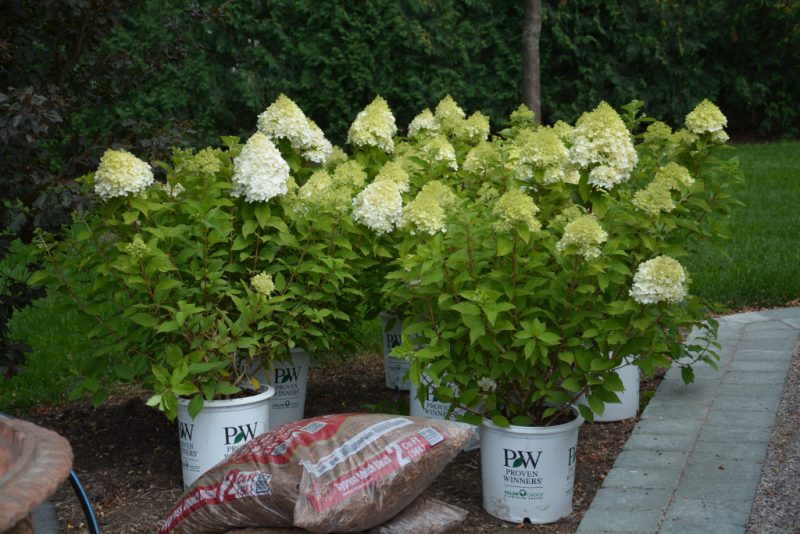
If you want to breed a new variety, it is convenient to purchase a finished seedling. Nurseries and specialized stores offer them in a large assortment, both with an open and a closed (in capacity) root system. The task of the grower is reduced to his competent choice.
To do this, before buying, you must carefully consider the seedling:
- The ground should look healthy, strong and have at least 2 shoots. Their deviation from the trunk line or curvature is permissible, which is easily corrected by subsequent trimming. The leaves on the shoots should be bright green. A brownish tint or lethargy of foliage indicates the presence of a disease.
- The roots should be well developed, without signs of mold, rot and over-dried areas. When buying a seedling in a container, inspection of the roots is also required. To carry it out, an earthen lump is carefully removed from the container and inspected. The soil should be clean and moist, visible roots - without signs of trouble.
Timelines for planting flowers

The time frame for planting hydrangeas is determined by the climatic conditions of the area:
- in regions with mild winters, crops are planted in spring (April) and autumn (September);
- in temperate latitudes, especially in its northern regions, hydrangea planting in spring is preferable during kidney swelling.
Young plants with open roots are planted immediately after acquisition. Experienced gardeners recommend doing this in the evening.
Plants sold in containers can be planted during the season by choosing a cloudy, cool day.
Step-by-step instructions for planting hydrangea in open ground
Correctly plant hydrangea in strength even for beginner growers.

To do this, you need to perform several sequential actions:
- dig out recesses of a certain size;
- place in the center of the hole the roots of a seedling or an earthen lump and fill them with soil;
- to condense, and then water and mulch the soil around the shoots.
Planting pits dig 2 or 3 weeks before planting.
The size of the recesses is determined by the volume of the root system of the seedling and approximately amounts to:
- for 1-2 year old plants, 30 cm in depth and width;
- for 4-5 year olds - 50 cm.
When preparing landing pits, it is necessary to take into account some nuances:
- when planting with a nutrient mixture, holes are dug a third deeper and wider;
- when placing bushes in rows between seedlings, they retreat 2-3 m, to obtain a dense hedge - 0.7-1 m;
- with a tight planting, hydrangea will bloom earlier, but subsequently the bushes will have to be discharged.
The seedling is placed in the central part of the recess and is covered with soil or a nutrient mixture. The root neck is slightly deepened, 2-3 cm deep, or left at the level of the soil. The soil around the shoots is well compacted. Planting seedlings purchased in containers is carried out by the method of transshipment.
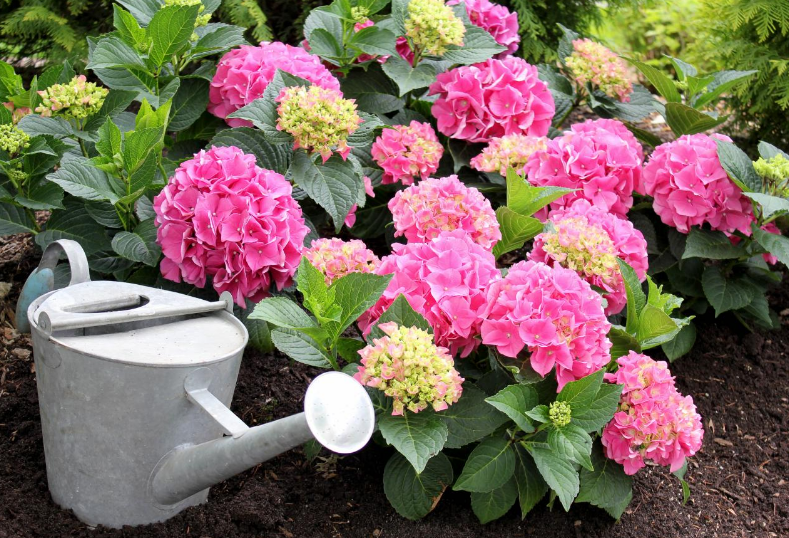
Planted plants are watered at the rate of 1 bucket under the bush. As soon as the moisture is completely absorbed into the ground, the trunk circle (10-12 cm) is mulched with peat, sawdust, wood bark or over-ripe foliage of 5-7 cm.
In the case of spring planting, the shoots of 1 or 2-year-old seedlings are cut, leaving at least 3 pairs of buds on each.
Hydrangea care after planting at the site

After planting, young plants are looked after:
- protect from exposure to sunlight and winds;
- regularly (1 time per week) abundantly (1-1.5 buckets under a bush) are watered;
- the shoots which are strongly extended or bent under the weight of inflorescences are tied up;
- sensitive to low temperatures varieties close for the winter.
When planting a nutrient mixture, top dressing in the first 2 years is not carried out. The exception is signs of nutrient deficiencies, manifested by the formation of small inflorescences and loss of brightness of the green color of the foliage.
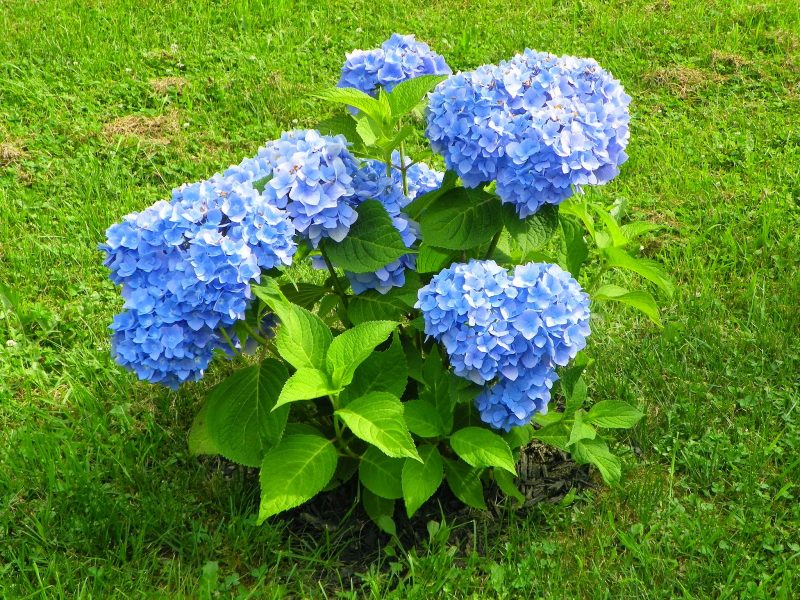
Fertilizers are applied several times a season, according to the following scheme:
- in the spring, during the period of active growth of shoots, fertilizing with nitrogen fertilizers is carried out;
- twice, at the stage of budding and when opening the first flowers, mineral additives rich in potassium and phosphorus are added;
- after flowering (August, first half of September), the plant is fed with superphosphate (1 tablespoon per bucket of water).
The nuances of planting hydrangea in the suburbs, in Siberia and the Urals
The culture belongs to thermophilic plants, however today it reigns in the gardens of the Moscow Region, is found in the Urals and even in Siberia.
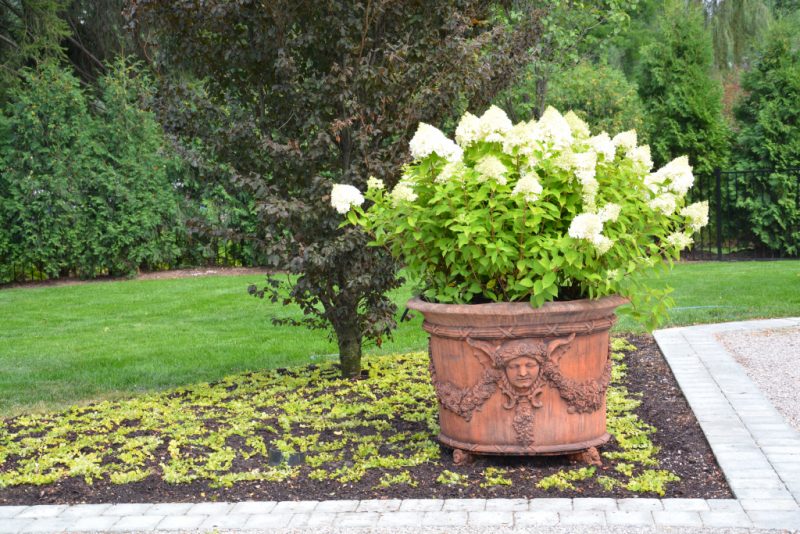
In the Moscow region and in the middle zone, varieties of tree-like, paniculate and broad-leaved or garden hydrangea are successfully cultivated.
The complexity of the climatic conditions of this area is easily compensated:
- a more thorough approach to the selection of seedlings, carried out taking into account the knowledge of the winter hardiness of the variety and its viability (the presence of well-developed roots and strong shoots);
- proper placement on the site, excluding open sunny places and proximity to trees;
- compliance with all the intricacies of planting and care.
In the Urals and Siberia in open ground, panicle hydrangea is successfully grown, preferring its dwarf (up to 1 m) varieties. They have well-developed roots, thanks to which it is easily reborn even with significant freezing of the ground part.
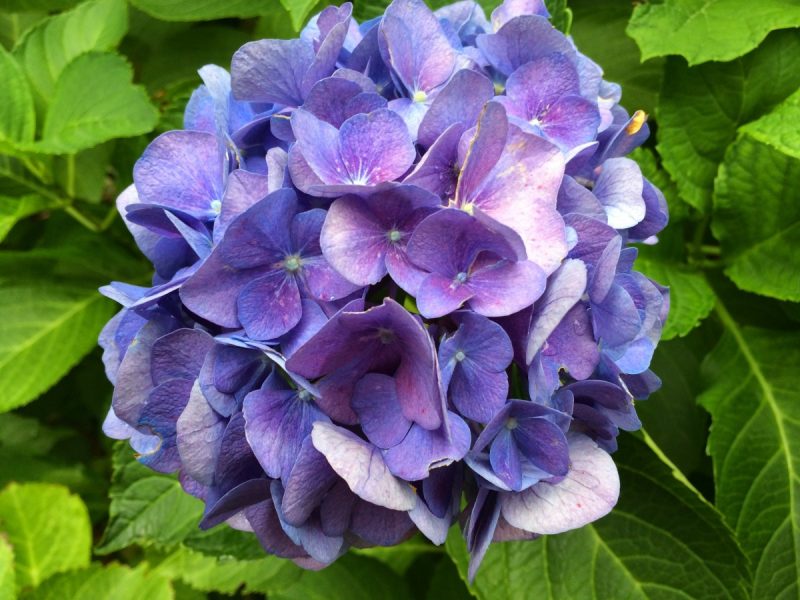
Planting hydrangeas in territories with frosty winters has certain nuances:
- of prime importance is the choice of variety;
- for planting, get strong 5-year-old seedlings;
- planting in open ground is carried out only in the spring, covering young plants until the threat of frost disappears completely.
Proper planting and subsequent care of young bushes is the key to beautiful hydrangea flowering.












